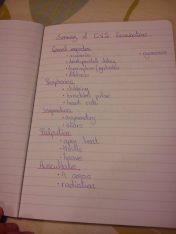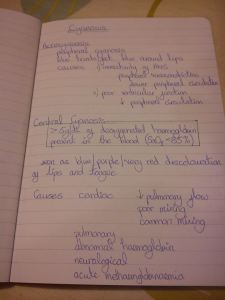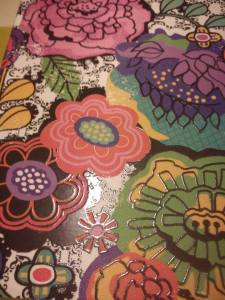This is something I know a lot about (Did I mention just how badly I failed my clinicals the first time around??). I was a lot more prepared the first time too – I was just badly prepared. If you want to rival my disastrous score, and get asked not to come back at the next sitting… here’s how!
1. Buy into the mystique that this is somehow a “special” exam.
At this point, this feels like the most important exam you will ever sit. Everyone will tell you that it’s the most important exam of your life. Nonsense (does that sound harsh??). Every exam that you have done up until this point is just as important, because it has got you to this point. It’s just another exam. If it’s just another exam, then you can revise and prepare for it in the same way as you have all the other exams that got you to this point. (It’s not even the final exam of your professional career anymore. It’s the exam that lets you practice as a registrar. So it’s the same as doing the APLS. Think about it like that, it doesn’t seem quite as bad. And which is more useful to you when the crash bleep goes off?? Exactly)
2. Use Nelson’s to revise (or other enormously large text book)
I love my copy of Nelson’s. It’s the first major thing I bought with my first proper pay-check as an FY1 (there were shoes, obviously, but this was different). So, when it came to preparing for the exam (see point 1), this was where I turned. Here’s the thing: Nelson’s (or alternative massive reference work of your choice) is just that. It’s a reference work. It’s for looking up weird and wonderful diagnoses that geneticists write in the notes; it’s for diseases that your consultant mentions casually on ward round. It will not help you pass the exam. You know why? Because the exam is not about seeing if you have memorised a reference work. This is not what you need to know. If you could memorise Nelson’s, then you wouldn’t need to own Nelson’s. So, don’t waste time. (It makes a really good support for building flat-pack furniture when you live alone; not so good for revision. Just saying)
3. Forget what the exam is about
It’s a test to see if you can work as a registrar. That’s all. It’s not about memorising Nelson. It’s about being the doctor that a parent will trust at 3am or in a Friday afternoon clinic. This is what you already do everyday at work: just make sure that you can demonstrate that in the exam.
4. Fail to practice
This is my main problem. On our first practice run with a consultant, I got so nervous that she thought I was going to faint. It didn’t get any better, mainly because my approach to every other practice session was a) hide at the back of the group, or b) start the session and turn into a gibbering wreck half-way through. Everyone has points at which they panic. You need to work out what yours are, and how to manage them. Repeating the “gibbering wreck who’s about to pass out” in the exam was a little embarrassing and didn’t help me pass.
5. Don’t plan your revision
There’s a curriculum – use it. But see point 6 below. More importantly, remember that the exam is trying to see if you can work as a registrar/middle-grade/whatever we’re called at the current moment in time. (Yes, I know I keep repeating this, but it took me failing and another 6 months to actually realise it). You need to know the stuff that you’re going to see: diabetes, wheeze, constipation. You don’t need to be able to replicate the Kreb’s cycle. (Not for the clinical anyway)
6. Spend more time planning than preparing
See the page on notebooks. I love designing a revision plan, working out exactly how much time I have for each topic, drawing up a timetable… The problem is that real life and an on-call rota gets in the way of the world’s best revision timetable. So, it’s one thing to have a revision plan; it’s another to plan more than work.
Having said that, there are some things that helped me. Hopefully, if I get time in the next few weeks, I’ll put them up.
Any other brilliant ideas on how not to pass clinicals? Feel free to share 🙂


